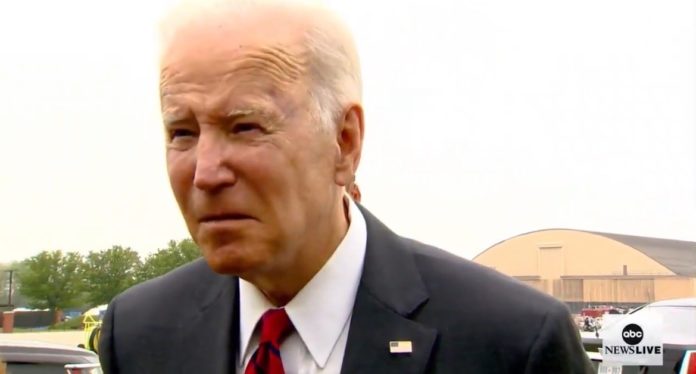Over $160 billion in unemployment benefits were likely lost of COVID money managed by the US government.
Newsmax reports on the estimated multi-billion-dollar loss by the US government.
COVID-19 pandemic unemployment benefits wound up being a “a magnet for rip-off artists,” as identity thieves capitalized on rushed benefits the government was not geared up for in a pinch, The Washington Post reported Sunday.
An estimated $163 billion in pandemic-related benefits were fraudulently received, according to the Labor Department.
Just $4.1 billion of that has been recovered, just 2.4% of the estimated stolen, raising concern the government is not going to get most of it back.
“The unprecedented explosion of unemployment claims, combined with years of disinvestment in our unemployment system, lack of state-by-state data sharing and weak identity controls, created a perfect storm for the fraud and identity theft in 2020 that we inherited,” adviser to President Joe Biden, Gene Sperling, told the Post in a statement.
The level of fraud is so prevalent, the $163 billion might be on the low end, according to the report.
“It’s obviously substantial,” U.S. Secret Service’s Roy Dotson, the national pandemic fraud recovery coordinator, told the Post. “I can’t really get into the number.
“We’re all trying to figure that out.”
The report that Newsmax relies on was from the far-left Washington Post. The post shared a story about identity theft that was prevalent in the COVID unemployment fraud schemes. The WaPo shares that over $1 trillion was set aside for unemployment benefits in the COVID packages. This is the money that was targeted by fraudsters.
In many cases, the criminals stole the unemployment funds using real Americans’ personal information. They bombarded states with applications filed in the names of actual workers or people in prison — sometimes to such a degree that, in the case of Maryland, fraudulent claims came to outnumber real requests for help, according to state correspondence reviewed by The Washington Post.
Criminals employed tools known as botnets to fire off thousands of applications, federal officials say, often with a single computer click. And they openly swapped tips for defrauding the government on popular websites and apps, including the messaging service Telegram. That has continued this year, as research showed at least two dozen groups with nearly 200,000 members openly discussed ways to avert states’ defenses and siphon funds just over an eight-week period in March and April.
The tactics are laid bare in a wide array of federal documents, congressional testimonies, technical reports and court filings, as well as interviews with roughly two dozen government officials and outside experts. Some of the malicious actors potentially even avoided detection, at least for a time, after the Labor Department refused to supply information needed to assist federal fraud investigations — a hurdle the White House intervened to resolve last year.
The troubles date to the earliest days of the pandemic, when roughly a million Americans were being thrust out of work daily. Congress responded with a series of massive rescue packages, which greatly augmented the jobless aid available nationally. Totaling nearly $900 billion, according to the Labor Department, the federal funds helped blunt the toll of the worst economic crisis since the Great Depression, allowing families to keep their homes and pay their bills.
But the aid quickly emerged as a ripe target for fraudsters, who found novel ways to exploit the nation’s under-resourced state unemployment agencies. In recent months, a wide array of state and federal law-enforcement agencies have sprung into action, training their sights on domestic criminals and gangs, as well as sophisticated networks based in Nigeria, Russia and Eastern Europe. The White House, meanwhile, has embarked on a broader effort to close the gaps in the nation’s unemployment program — and ensure that other federal aid can’t be targeted in the same way again.
The WaPo adds that the generous representatives in Congress offered Americans $600 a week while they were wrongly laid off as a result of insane COVID shutdowns that didn’t prevent the coronavirus and cost Americans lives.
Beginning in March 2020, Democrats and Republicans aimed to provide historic economic support for the torrent of workers unexpectedly thrust from their jobs. Lawmakers expanded the size of the benefits — at one point providing an extra $600 per week — while extending the amount of time that out-of-work Americans could receive the aid. Congress also created a program to provide financial help to those who drive for Uber, deliver for DoorDash or otherwise participate in the “gig economy” — a category of self-employed laborers who traditionally are not eligible for unemployment insurance.
Where did the money go – to the Russians, to North Korea, to the Bidens, to BLM, to drug cartels? $160 billion is a lot of money – a lot of money.



